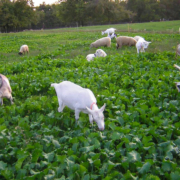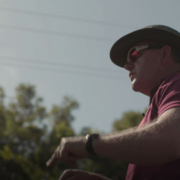Bigger Isn’t Always Better: When Small Cows Shine
 Print This Post
Print This Post
By Tracy Mumma, NCAT Sustainable Agriculture Specialist
Our farm is small, and it doesn’t have a lot of infrastructure or equipment. This makes handling cattle an intimidating proposition for our family. Fortunately, not all cattle are created equal. By selecting Aberdeen Angus, a small breed of cattle about 44 inches at the hip and 1,000 pounds per cow, we were able to work a beef enterprise into our farm operation with minimal difficulty.
There are several reasons why someone might choose small cattle, aside from the fact that they take up less space: they are comparatively efficient at converting forage to weight gain, and they typically yield a high rate of meat per live-weight pound. Small cattle can be both an economical and a practical choice for a farmer looking to add an enterprise. Small cattle also have some potential marketing benefits. We’ve found that smaller cuts of meat are popular with health-conscious consumers because they deliver portion sizes in line with current recommendations. When we direct-market beef to our customers, they appreciate the smaller-sized animals that fit in a freezer and don’t represent as large of an investment for someone buying a whole or half beef.
If you want to look into small cattle as a potential enterprise, you have a range of options. There are some miniature cattle breeds (like the ones we have), some small breeds (like the Belted Galloway raised by my colleague, Margo), and small individuals in some standard breeds. However, it’s important to be aware that if you choose small individuals of a standard breed as breeding stock, they may not breed true to size.
Before you rush out to buy a herd of small cattle, though, there are some things you should consider. For example, it can be difficult to locate breeding stock nearby if you choose an uncommon breed. When you’re choosing a breed or species, keep your whole-farm goals in mind, and select something that will help you fulfill those goals. ATTRA has a helpful three-part video workshop series on getting started with livestock that can help you think through what’s the best fit for your situation. Access the first episode of Building Strong Foundations here.
Another thing to keep in mind is that it can be a challenge handling small cattle with full-size equipment, if you happen to be fortunate enough to have equipment already. Finally, there’s an important economic concern with producing small cattle: many processors charge a flat rate for kill fees and disposal fees. This means that with fewer pounds of beef overall, that cost per pound is higher. Consequently, the break-even price for beef from smaller cows is usually significantly higher. That’s important if you’re direct-marketing your beef, and it’s also one of the reasons that small-frame cattle don’t sell well in the commodity market.
These considerations are important, but if you’re ready to cope with them, you may find that small cattle are the right match for your small or new farm. You can hear more about the characteristics, considerations, and benefits of small-frame cattle in the ATTRA podcast Episode 239, Good Things Come in Small Packages: A Look at Small-Frame Cattle. In this podcast, Margo Hale and I talk about our observations on smaller cattle, based on our respective experiences in Arkansas and Montana with Belted Galloway and Aberdeen Angus.
Related ATTRA Resource:
This blog is produced by the National Center for Appropriate Technology through the ATTRA Sustainable Agriculture program, under a cooperative agreement with USDA Rural Development. ATTRA.NCAT.ORG.

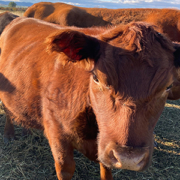
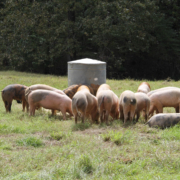

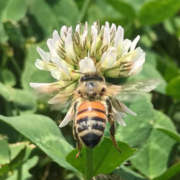 USDA photo by Lance Cheung
USDA photo by Lance Cheung